Abstract
Acidic solvents extract the same porphyrin-protoporphyrin-from the erythrocytes of patients with either erythropoietic protoporphyria or lead intoxication. However, extractable protoporphyrin disappears rapidly, both in vivo and in vitro, from erythrocytes in erythropoietic protoporphyria but slowly, if at all, in lead intoxication. Consistent with these observations, fluorescence spectroscopy revealed that the intracellular state of the erythrocyte protoporphyrin is different in the two diseases. Spectrofluorometric measurements coupled with fractionations and biochemical syntheses showed that in erythropoietic protoporphyria the protoporphyrin is bound as the free base to hemoglobin molecules at sites other than the heme binding sites. In lead intoxication the fluorescent porphyrin is also bound to hemoglobin but is present as zinc protoporphyrin. The data suggest that the zinc protoporphyrin is bound at heme binding sites. Acidic extraction solvents remove the chelated zinc, but zinc protoporphyrin may be extracted intact from erythrocytes with acetone, ethanol, or the detergent Ammonyx-LO.
Full text
PDF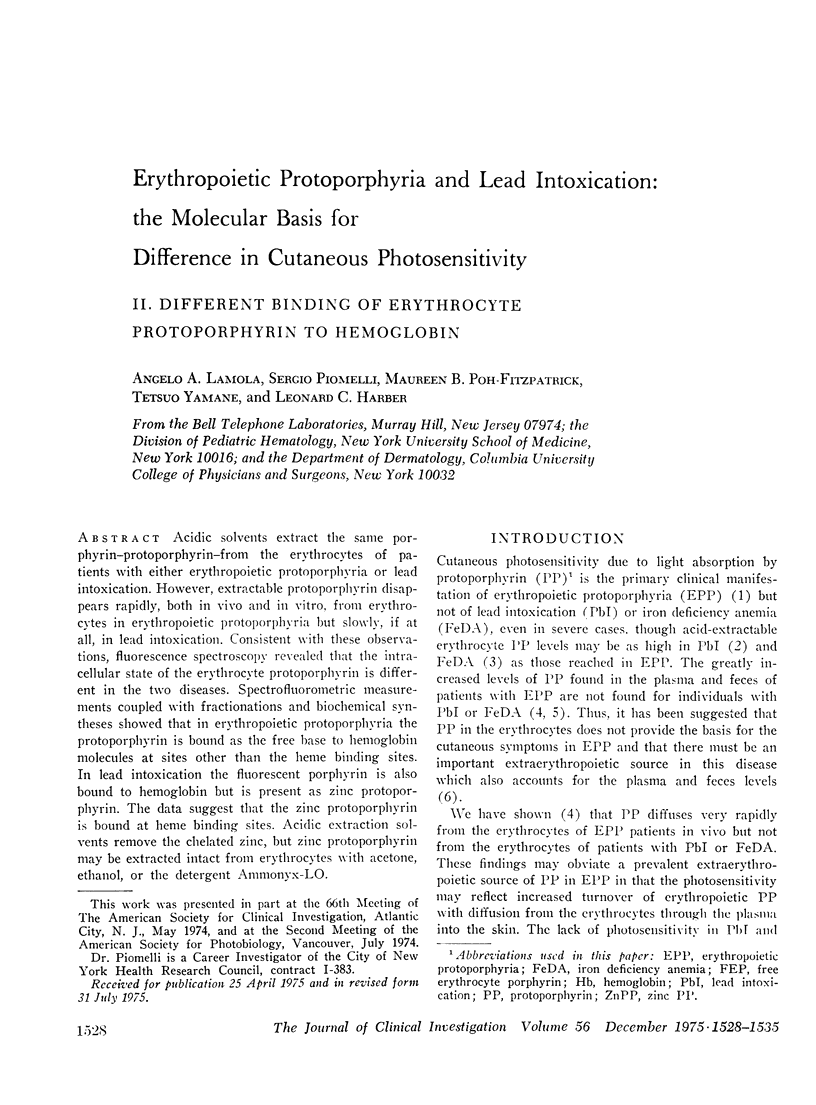
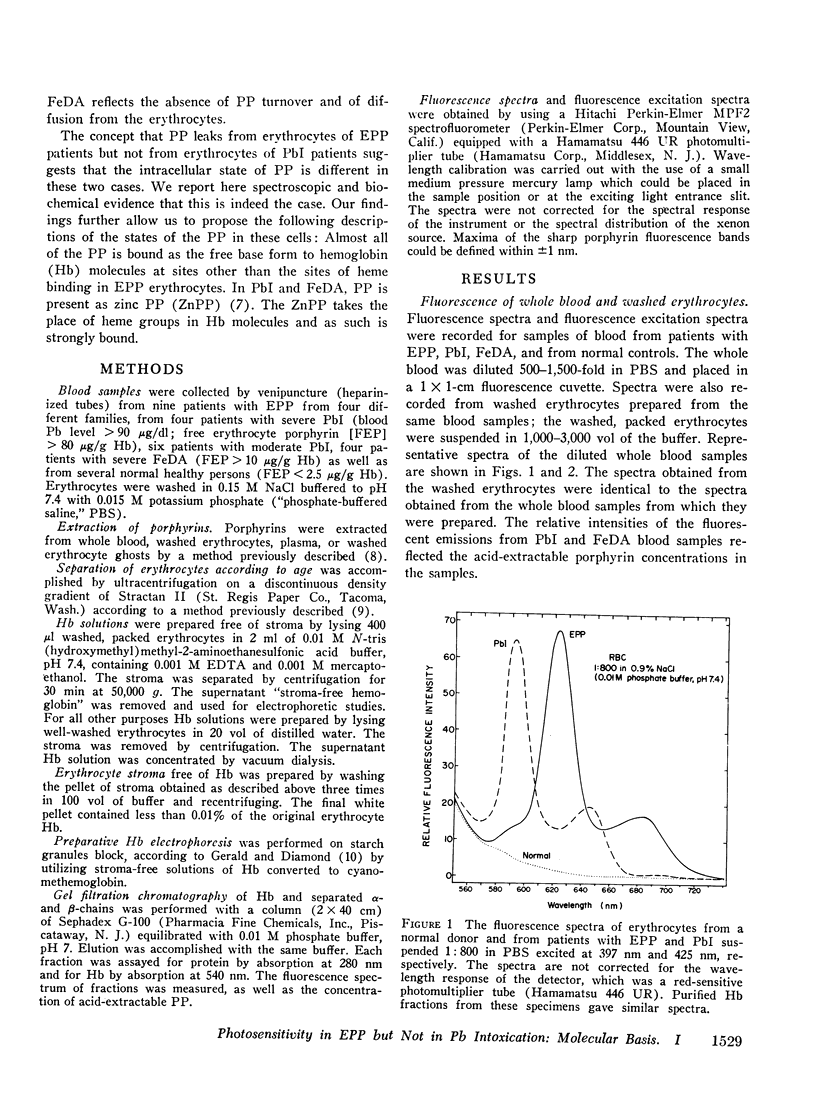
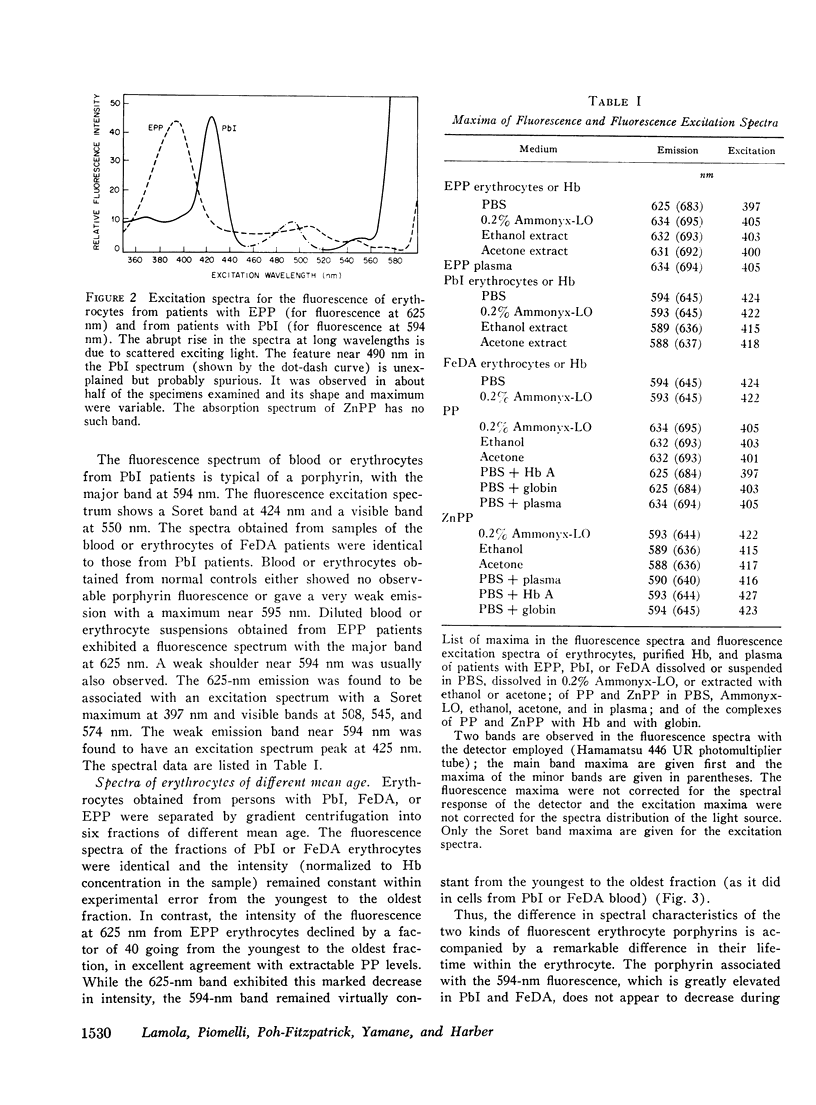
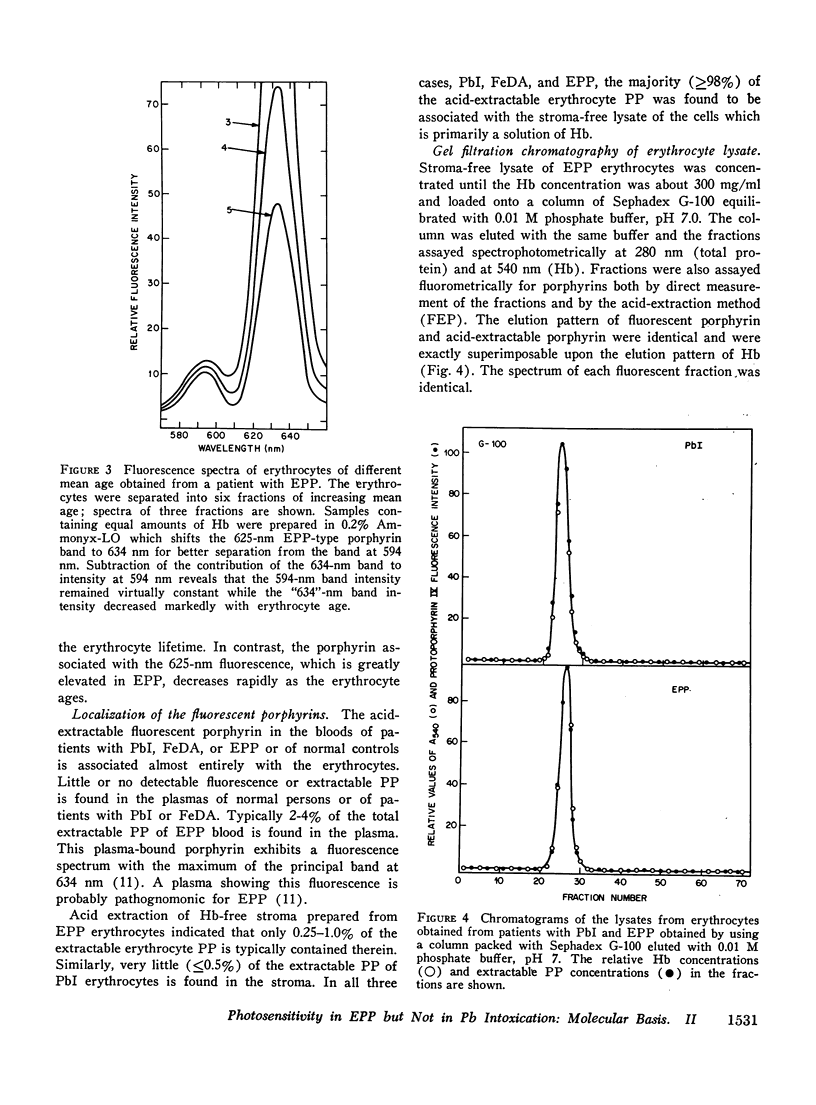
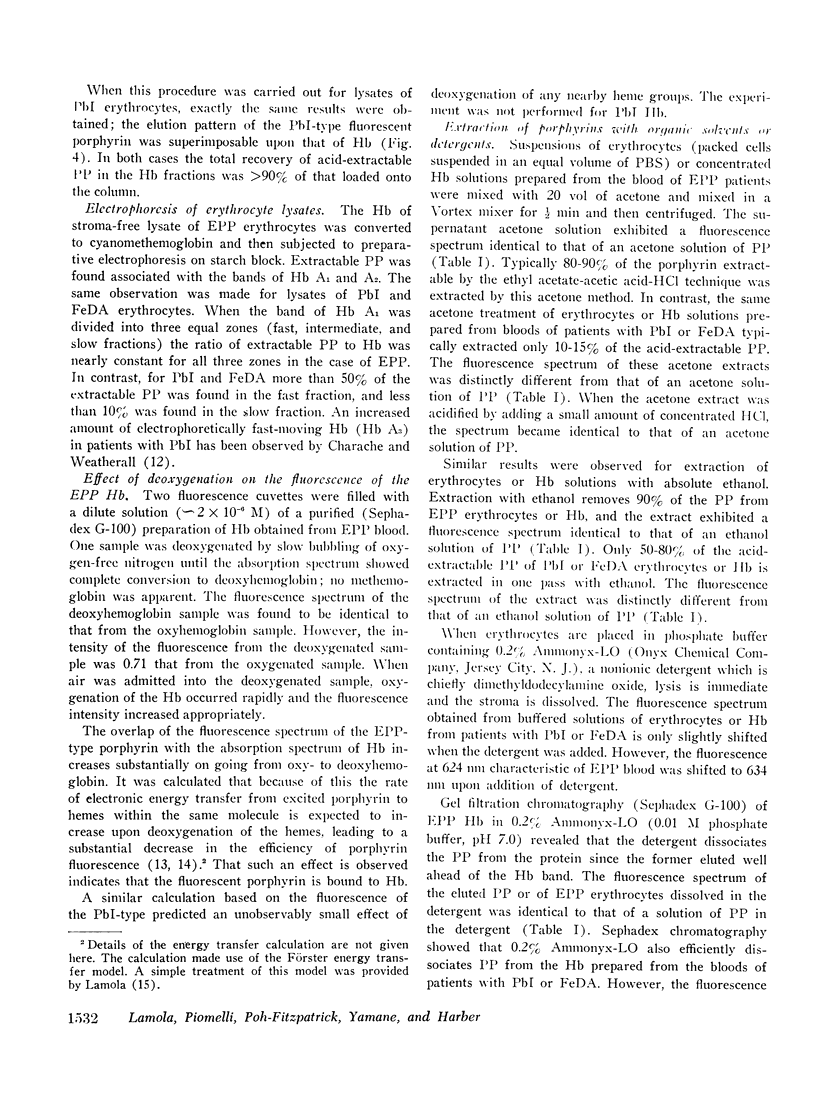
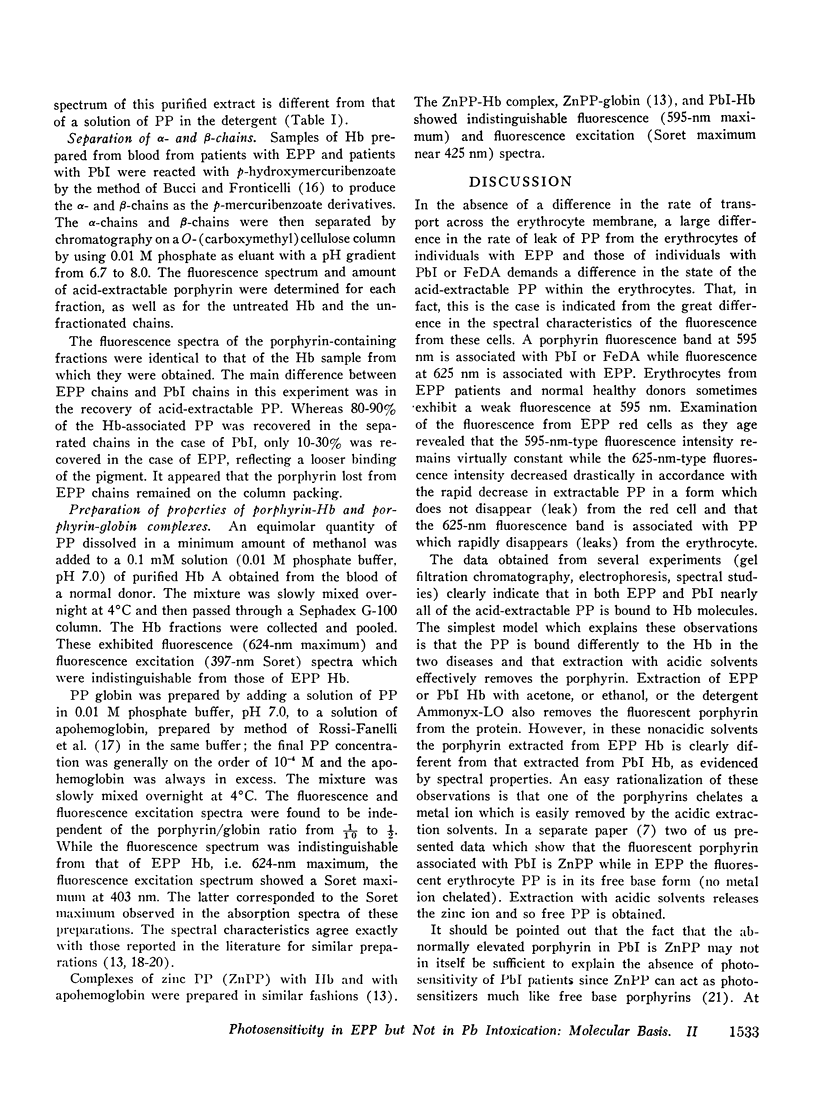
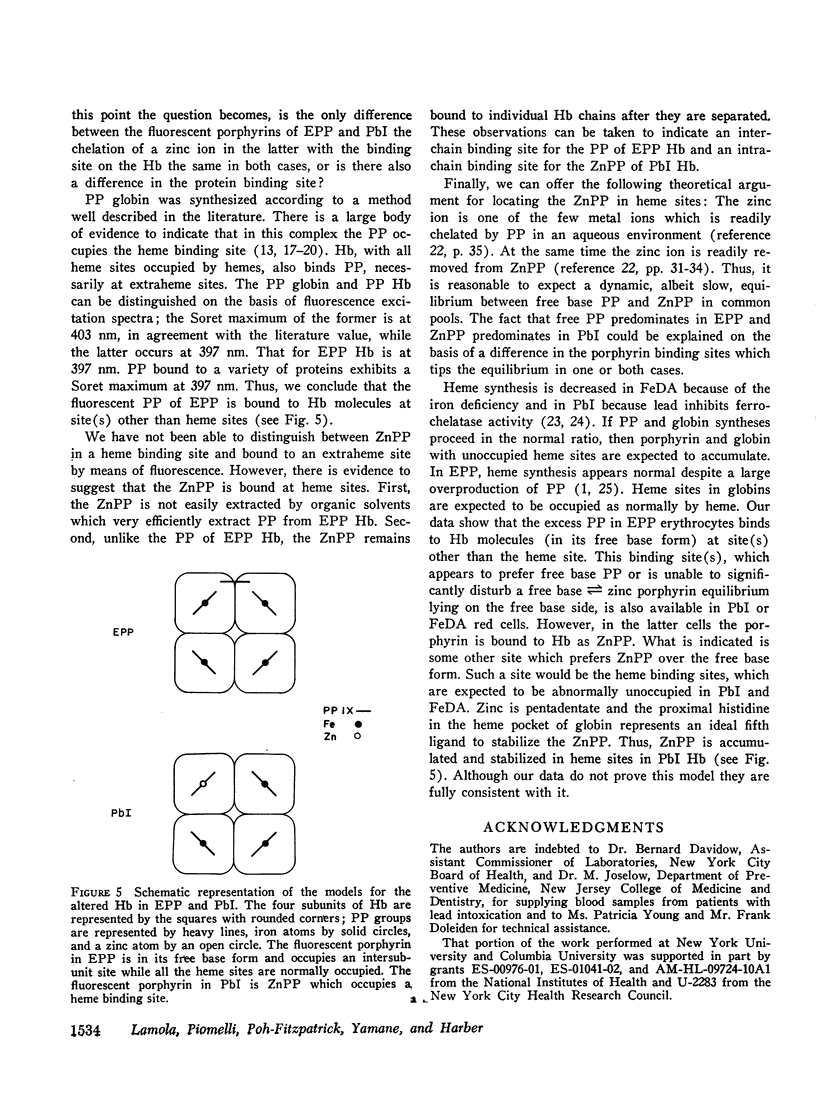
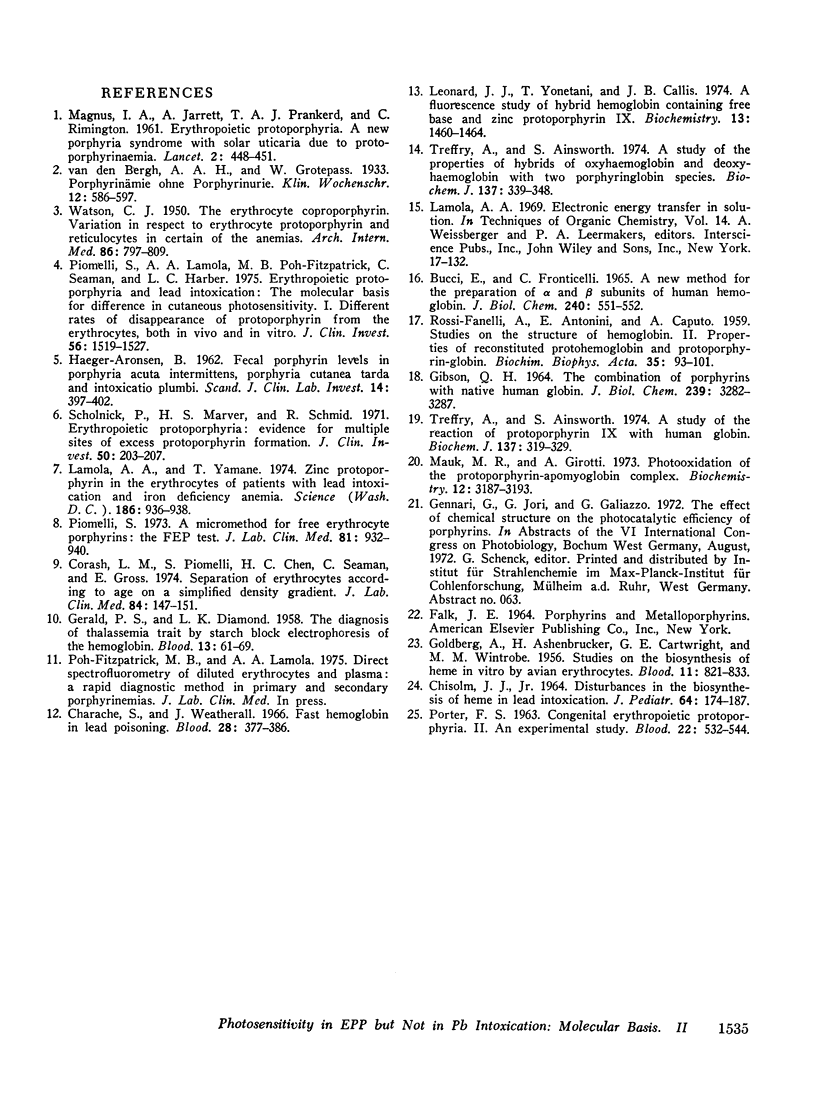
Selected References
These references are in PubMed. This may not be the complete list of references from this article.
- ASHENBRUCKER H., CARTWRIGHT G. E., GOLDBERG A., WINTROBE M. M. Studies on the biosynthesis of heme in vitro by avian erythrocytes. Blood. 1956 Sep;11(9):821–833. [PubMed] [Google Scholar]
- CHISOLM J. J., Jr V/. J Pediatr. 1964 Feb;64:174–187. doi: 10.1016/s0022-3476(64)80261-4. [DOI] [PubMed] [Google Scholar]
- Charache S., Weatherall D. J. Fast hemoglobin in lead poisoning. Blood. 1966 Sep;28(3):377–386. [PubMed] [Google Scholar]
- Corash L. M., Piomelli S., Chen H. C., Seaman C., Gross E. Separation of erythrocytes according to age on a simplified density gradient. J Lab Clin Med. 1974 Jul;84(1):147–151. [PubMed] [Google Scholar]
- GERALD P. S., DIAMOND L. K. The diagnosis of thalassemia trait by starch block electrophoresis of the hemoglobin. Blood. 1958 Jan;13(1):61–69. [PubMed] [Google Scholar]
- GIBSON Q. H. THE COMBINATION OF PORPHYRINS WITH NATIVE HUMAN GLOBIN. J Biol Chem. 1964 Oct;239:3282–3287. [PubMed] [Google Scholar]
- HAEGER-ARONSEN B. Fecal porphyrins in porphyria acuta intermittens, porphyria cutanea tarda and intoxicatio plumbi. Scand J Clin Lab Invest. 1962;14:397–402. doi: 10.3109/00365516209079727. [DOI] [PubMed] [Google Scholar]
- Lamola A. A., Yamane T. Zinc protoporphyrin in the erythrocytes of patients with lead intoxication and iron deficiency anemia. Science. 1974 Dec 6;186(4167):936–938. doi: 10.1126/science.186.4167.936. [DOI] [PubMed] [Google Scholar]
- Leonard J. J., Yonetani T., Callis J. B. A fluorescence study of hybrid hemoglobins containing free base and zinc protoporphyrin IX. Biochemistry. 1974 Mar 26;13(7):1460–1464. doi: 10.1021/bi00704a022. [DOI] [PubMed] [Google Scholar]
- MAGNUS I. A., JARRETT A., PRANKERD T. A., RIMINGTON C. Erythropoietic protoporphyria. A new porphyria syndrome with solar urticaria due to protoporphyrinaemia. Lancet. 1961 Aug 26;2(7200):448–451. doi: 10.1016/s0140-6736(61)92427-8. [DOI] [PubMed] [Google Scholar]
- Mauk M. R., Girotti A. W. Photooxidation of the protoporphyrin-apomyoglobin complex. Biochemistry. 1973 Aug 14;12(17):3187–3193. doi: 10.1021/bi00741a007. [DOI] [PubMed] [Google Scholar]
- PORTER F. S. CONGENITAL ERYTHROPOIETIC PROTOPORPHYRIA. II. AN EXPERIMENTAL STUDY. Blood. 1963 Nov;22:532–544. [PubMed] [Google Scholar]
- Piomelli S. A micromethod for free erythrocyte porphyrins: the FEP test. J Lab Clin Med. 1973 Jun;81(6):932–940. [PubMed] [Google Scholar]
- Piomelli S., Lamola A. A., Poh-Fitzpatrick M. F., Seaman C., Harber L. C. Erythropoietic protoporphyria and lead intoxication: the molecular basis for difference in cutaneous photosensitivity. I. Different rates of disappearance of protoporphyrin from the erythrocytes, both in vivo and in vitro. J Clin Invest. 1975 Dec;56(6):1519–1527. doi: 10.1172/JCI108233. [DOI] [PMC free article] [PubMed] [Google Scholar]
- ROSSI-FANELLI A., ANTONINI E., CAPUTO A. Studies on the structure of hemoglobin. II. Properties of reconstituted protohemoglobin and protoporphyrin-globin. Biochim Biophys Acta. 1959 Sep;35:93–101. doi: 10.1016/0006-3002(59)90338-5. [DOI] [PubMed] [Google Scholar]
- Scholnick P., Marver H. S., Schmid R. Erythropoietic protoporphyria: evidence for multiple sites of excess protoporphyrin formation. J Clin Invest. 1971 Jan;50(1):203–207. doi: 10.1172/JCI106474. [DOI] [PMC free article] [PubMed] [Google Scholar]
- Treffry A., Ainsworth S. A study of the properties of hybrids of oxyhaemoglobin and deoxyhaemoglobin with two porphyringlobin species. Biochem J. 1974 Feb;137(2):339–348. doi: 10.1042/bj1370339. [DOI] [PMC free article] [PubMed] [Google Scholar]
- Treffry A., Ainsworth S. A study of the reaction of protoporphyrin IX with human globin. Biochem J. 1974 Feb;137(2):319–329. doi: 10.1042/bj1370319. [DOI] [PMC free article] [PubMed] [Google Scholar]
- WATSON C. J. The erythrocyte coproporphyrin; variation in respect to erythrocyte protoporphyrin and reticulocytes in certain of the anemias. AMA Arch Intern Med. 1950 Dec;86(6):797–809. doi: 10.1001/archinte.1950.00230180002001. [DOI] [PubMed] [Google Scholar]


